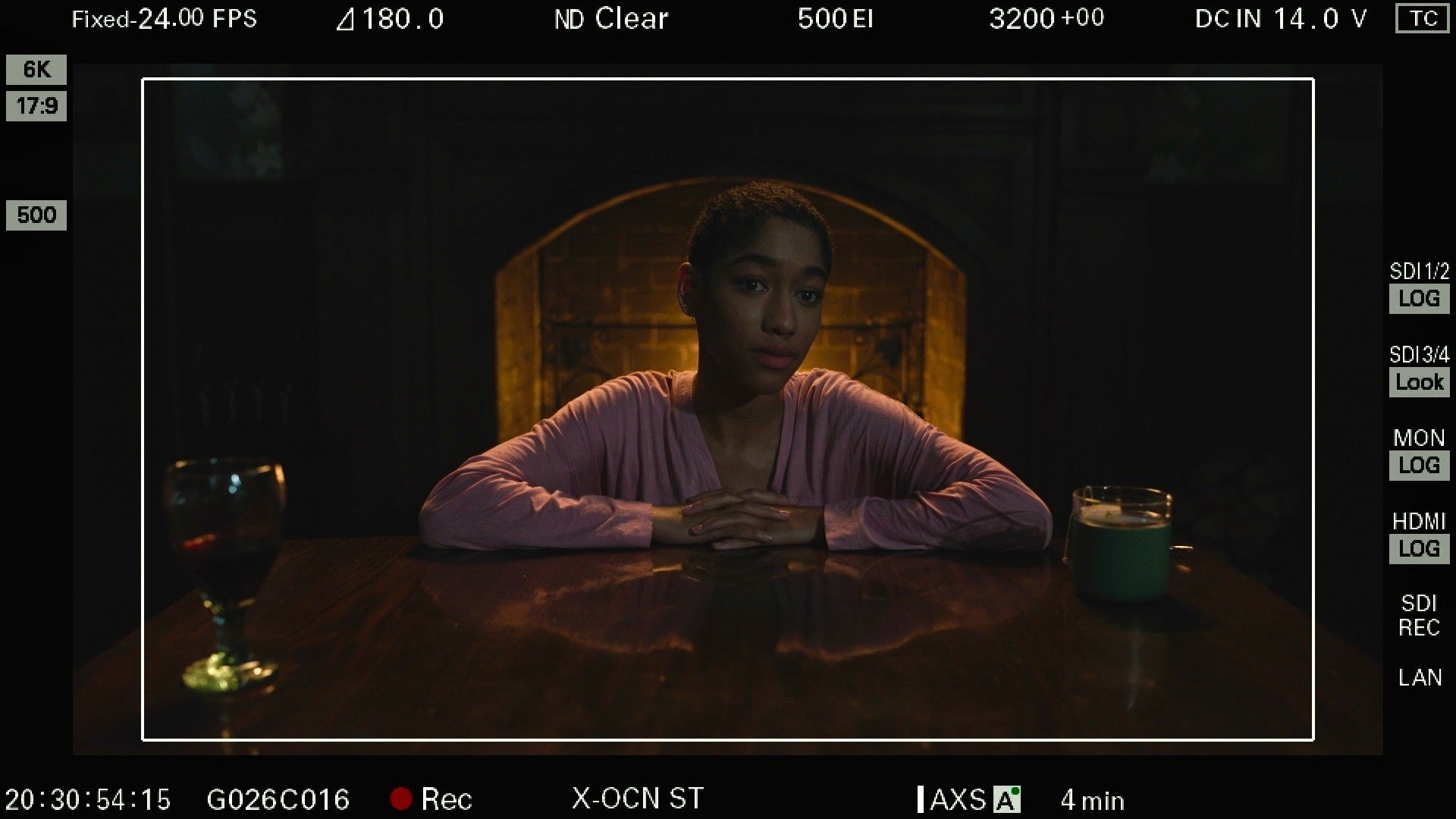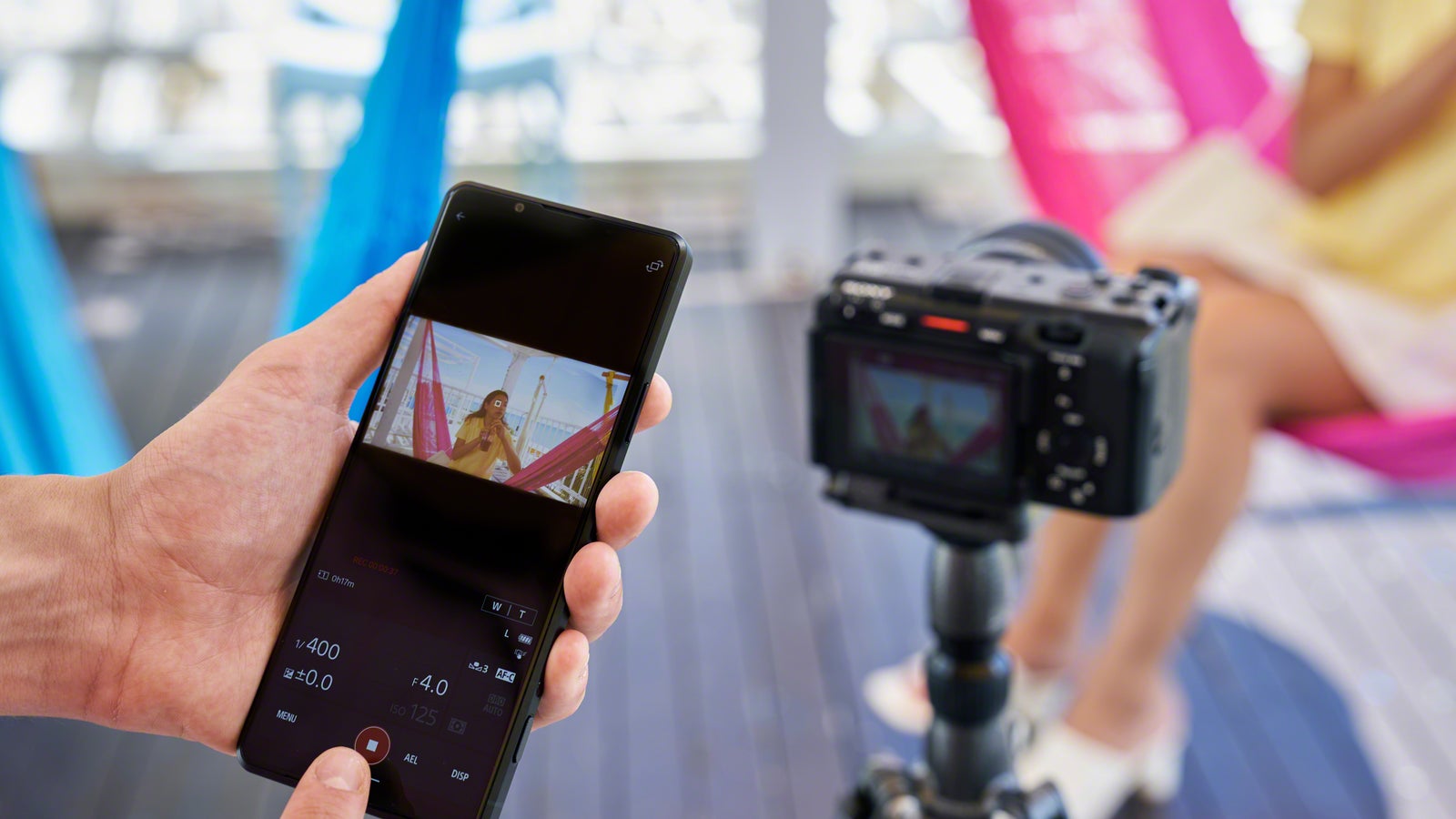
01-23-2024 - Case Study
Low Light, High Drama: How ‘AHS, The Midnight Club’ DP James Kniest Uses Shadows and the Sony VENICE to Carve Out Thrilling Looks
By: Oakley Anderson-Moore
Tips on creating dark and moody films with the Sony VENICE from the suspense master DP of American Horror Stories and The Midnight Club.

James Kniest has a way with the dark. From the unique look of each individual American Horror Stories episode to splicing genres on The Midnight Club, Kniest knows how to create maximum dramatic effect with the dark edges of the frame. How do you create this type of look?
For Kniest, it’s about the intersection of cutting-edge sensor technology with artistic themes that have been circling the human psyche for eons. As Kniest says, “Let there be shadows!”
Kniest sat down with Sony Cine to talk about how he works with the VENICE and VENICE 2 to create these compelling dark and moody looks.
From key grip to executive creatives, everybody needs to see the vision
For Kniest, communicating with the director or showrunner must start with reference images.
“We can express ideas and thoughts, but without pictures attached to them, it's open to individual interpretation,” says Kniest. “Cyan to you is not cyan to me, or fast to you is not necessarily fast to me.”
Kniest uses SHOTDECK, FrameGrab, classical paintings, and an IG called Dark and Gloomy Art.
“There's content on the Dark and Gloomy IG page that just blows my mind, things that could have been painted in the centuries ago,” he says. “It makes me realize that some of these themes have been in our human consciousness since the beginning of time.”
While finding references to talk about is the first step in the conversation about the look, Kniest also uses that conversation to start with what budget and resources are available, and work within those limitations. Once the key creatives are on board with the strategy, he continues sharing straight through to production.
“For example, even with positions like the Rigging Gaffer I’d start the conversation with ‘Hey, this is what we're going for. Let's use this as a template or inspiration.’ It's a collaborative team effort all the time, and it opens up the dialogue for different crew positions to add to it. And it just grows to something better and more creative, or artistic, than one person could do on their own.”

How James Kniest creates drama and horror with backlight
Kniest will often have gone to the location to shoot stills with a smaller Sony cinema line camera that can match the Sony VENICE, notably at night, to study the lighting and color. Then he begins with the tone.
“I enjoy trying to create images that have some weight to them, and that have some tone that can convey the message or the vibe of the work at hand,” details Kniest. “So from a lighting standpoint, to me that means creating shadows.
To begin with, I usually analyze a location or set, to figure out how we can backlight it in order to carve out the shapes of certain elements, and the movement of things. And then I figure out how moody it is. Is there no fill light coming in? Is there a lot of fill light coming in? In how sensitive the cameras are in the dynamic range now, a lot of times it's about taking light away. So we'll use big solids to take light away, negative fills we call it, and really try to bring the overall ambience down.”

From American Horror Stories to The Midnight Club: contrast is everything
According to Kniest, making a moment in a film resonate as dark doesn’t mean making it pitch black.
“I think an important way to make things feel dark, is to have some bright elements in the frame so the tone feels relatively dark,” explains Kniest. “If you had a lamp that's at normal exposure or maybe just a tad over, it's bright. So then you can have something else in the frame that feels really dark, but all the detail is there. So building that contrast through lighting is utmost important in terms of creating the mood. And less is more. Oftentimes we'd pre-light a set with options or embrace an existing environment then I’ll say, ‘Turn it off. Maybe we'll just turn that one off, and that one off, and that one off.’”
How to maximize shadows with the Sony VENICE and dynamic range
The incredible dynamic range of the VENICE 1 and VENICE 2 goes hand in hand with the ability to light this way.
“We go into a space, and it's taking light away and turning a lot of things off,” explains Kniest. “Especially with the dual ISO on the VENICE, and how clean the image is at 2,500 ISO, or even 3,200 ISO. We have all these amazing lenses now that are really fast. So you don't need a lot of light any more really, unless you're doing high speed, or you need some deeper depth of field.” It's a little bit of traditional photography, starting with a backlight, and then three point lighting, and fill to taste, or key to taste. Let there be shadows.”
Working with the Sony VENICE and Sony VENICE 2 on fast-moving shoots
For Kniest, choosing a camera is considering both deliverables and what Post needs.
“Sony products have come so far, and have advanced so much,” says Kniest. “I've found that with the variety of content I've been shooting, and wanting to use different lenses, that the higher resolution of the Sony camera has helped us be able to scale the frame to what the coverage of the lenses allows. So you can use several different lenses within the body of work, and be able to scale them to avoid any vignetting, and still be at an acceptable resolution.”
In addition to resolution deliverables, another big consideration for Kniest is camera movement.
“I really, really love the Rialto mode. The VENICE is so versatile in the Rialto mode. There's an amazing backpack that carries the camera, making the head of the camera super low profile. You can stuff it into corners, you can put it on a dashboard, you can handhold it in a really controlled way and move easily. And even if you have to stabilize, it's so light and compact that it's really easy to do. I'm just thrilled about the technological advances of VENICE. What's really important in today's production is being able to be versatile, being able to tick several boxes with the same build.”
Why it’s an interesting time to be a filmmaker
While James Kniest works on high end projects that use the likes of the VENICE 1 and 2, he also recognizes the versatility of smaller Sony cinema cameras.
“I think that it's a really interesting time for young filmmakers and people out there who don't necessarily have the budgets,” says Kniest. “They can really make a lot of compelling content with some lower priced equipment, especially the Sony camera line. Before I started shooting Sony, we'd be using Go Pros or a 5D when small rigged cameras were needed, and they don't really match the A camera that well. But now with the Sony line, you can get an FX3 and FX30, and all these cameras for the most part match very well. So when we need to mount one up there on the telephone pole or in the corner of the room, we can use a smaller camera that will cut seamlessly with the VENICE. The form factors are amazing. These cameras are incredible now. It's just a great time to be a filmmaker.”




